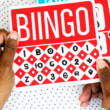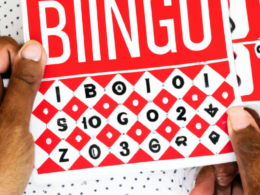Bingo is a form of gambling where players guess numbers in a pattern on a grid in an effort to win prizes. The grid is typically filled with 26 numbers, but can also have up to 52 numbers. To play, the player selects a number from 1 to 26 and then clicks on the corresponding number on the grid.
If the selected number is in the pattern, the player earns a point; if not, the player loses a point. The first person to earn 200 points or more wins the game.
To calculate how Bingo is played, each number in the grid corresponds to one of 26 possible outcomes (1 through 26). To determine which outcome corresponds to a particular number, bingo software uses what is called a “random number generator.
” This algorithm generates unpredictable numbers that are used to create the grid. For example, when someone clicks on number 10 on the grid, the random number generator might generate a 2 because 10 + 2 = 12.
A bingo player can lose points by picking any number other than 1 through 26 on the grid or by picking numbers that are already claimed by other players. In addition, if someone picks all of the numbers in one column or row (called “bingo”), that player automatically wins that column or row and all of its prizes (called “bingo balls”).








